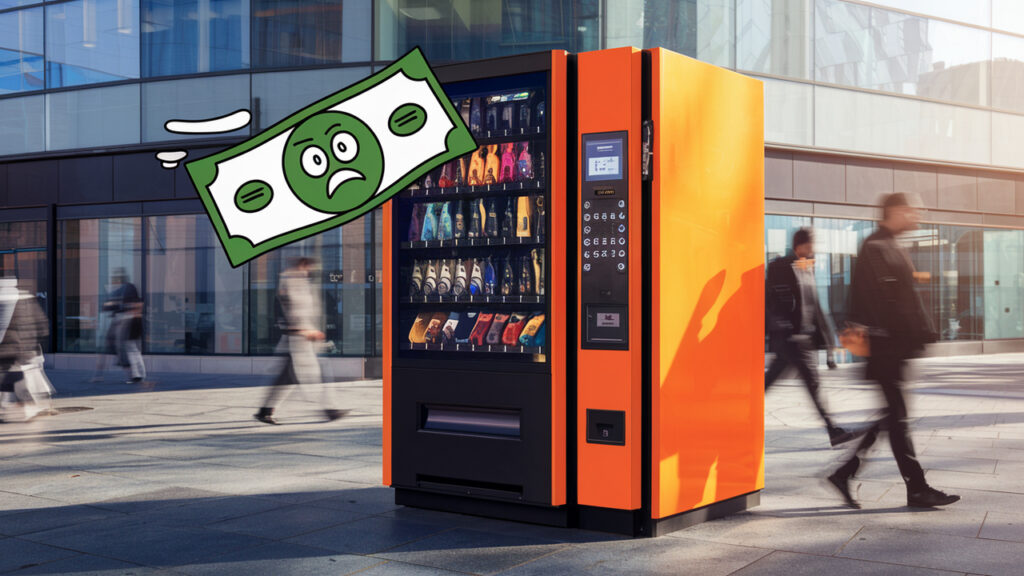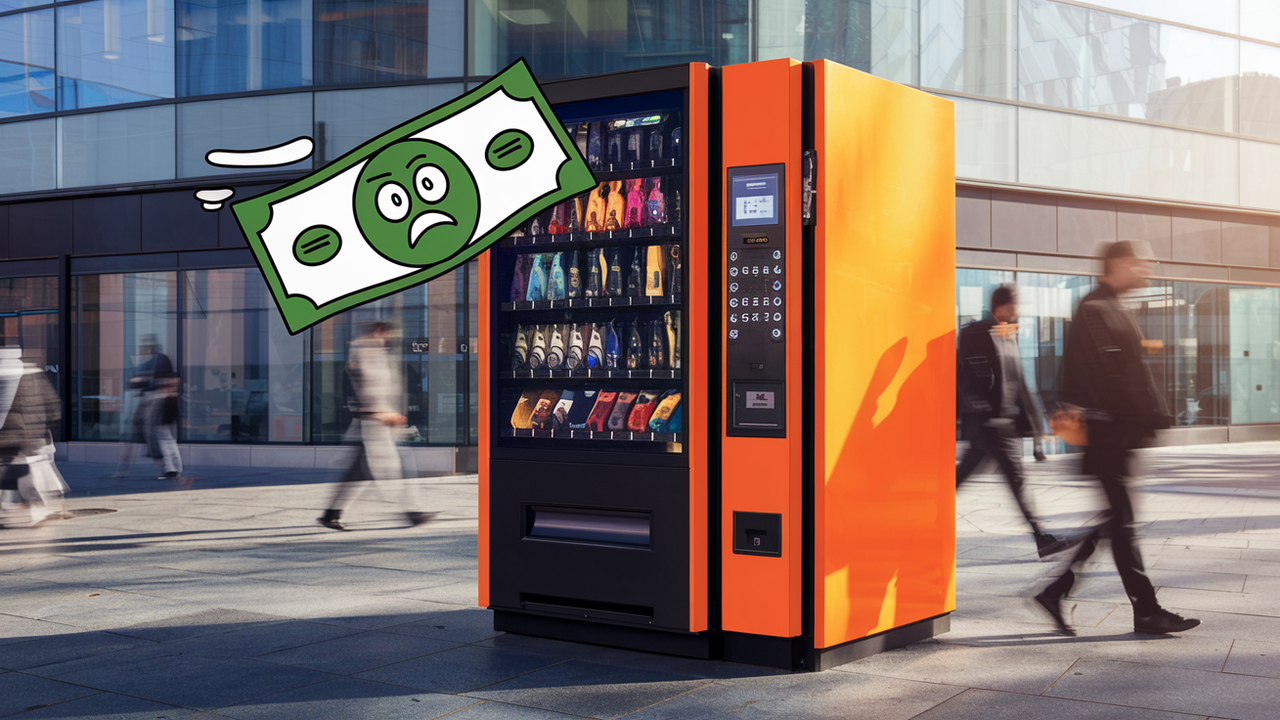Top Mistakes to Avoid When Starting a Vending Machine Business
Starting a vending business? Don’t waste time or money. Here are the top mistakes to avoid when starting a vending machine business, based on real-world experience and what I learned the hard way.
When I got into the vending business, I was excited—but I also made some rookie mistakes that cost me time, money, and a few missed opportunities. If you’re planning to get started or just bought your first machine, let me save you from the headaches I went through.
These are the top mistakes new vending operators make, and how you can avoid each one from day one.

Table of Contents
1. Buying a Machine Before Securing a Location
I get it—you want to hit the ground running. But trust me, the biggest mistake is buying a vending machine without having a location confirmed first. I made this mistake once and ended up storing the machine in my garage for months.
Instead, start by pitching locations—schools, offices, gyms, etc.—and only buy a machine that fits the space once it’s approved.
2. Choosing the Wrong Type of Machine
Not every location needs a snack-and-drink combo machine. Some places do better with cold drinks only. Others might benefit from healthy snack machines. I bought a giant combo machine for a tiny office once, and it barely fit through the door.
Always match the machine to the needs of the location, not just your personal preference.
3. Ignoring Dimensions and Access Points
I learned this one the hard way: measure doors, elevators, and tight corners before delivery. A machine might look compact online, but getting it into the location is another story.
Write down exact measurements of your machine and the building entry path before you schedule delivery.
4. Stocking the Wrong Products
You might love energy drinks and hot Cheetos—but your customers might not. One early mistake I made was stocking what I liked, not what sold well.
The solution? Watch sales trends, ask location owners for input, and stock best-sellers from Amazon.
➡️ Top vending machine snacks on Amazon
5. Forgetting to Track Sales and Inventory
At first, I wasn’t tracking which products sold fastest. I wasted money over-ordering slow movers and ran out of top sellers. Now, I use simple spreadsheets and remote inventory systems to monitor every machine.
Even one machine should be managed like a mini business.
6. Not Offering Cashless Payment Options
In 2025, not having a card reader or mobile payment system is a big mistake. Many people don’t carry cash. I saw a big jump in sales after adding contactless readers—even more in office and gym locations.
Always choose a machine with cashless compatibility.
7. Poorly Maintaining the Machine
An empty, dirty, or broken vending machine reflects badly on your business. I once lost a great location because I waited too long to fix a jammed coil.
Clean and inspect your machine weekly. Respond quickly to service calls. Keep your machine looking professional—it’s your brand.
8. Not Having a Business License or Insurance
Even if you’re starting small, skipping business registration is risky. Some locations may ask for liability insurance or a business license. I recommend registering your business as an LLC and keeping a basic liability insurance policy for protection.
9. Overpaying for Your First Machine
Don’t fall for overpriced new machines when you’re starting out. I’ve bought refurbished, fully programmed machines from reputable sellers on Amazon or local distributors—and they worked just fine.
Shop smart. And don’t forget: plug-and-play vending machines save setup time.
➡️ Browse vending machines on Amazon
10. Thinking It’s 100% Passive
Vending is semi-passive, but not completely hands-off. You’ll need to restock, troubleshoot, and monitor performance. Once I accepted this, I started treating my route like a real business—and my profits followed.
Plan to check on your machines regularly and give customers the service they expect.
Final Thoughts
Starting a vending machine business is one of the best low-overhead side hustles you can launch. But going in blindly can cost you money, time, and opportunities. If you avoid these mistakes, you’ll be ahead of 90% of new vendors.
Start small, learn from every location, and build your route smart.
One mistake I see often is placing a vending machine in a low-traffic location just because it’s free. I’ve done it myself. If no one walks by the machine, it won’t matter how great your snacks are or how new your unit is. Location truly is everything in this business.
I also underestimated how long it takes to build a reliable restocking routine. At first, I was driving to every machine randomly. Eventually, I created a weekly route based on real sales data. That one shift helped me save gas, time, and increase profits.
Another mistake? Not checking expiration dates frequently. I lost money early on because I didn’t rotate stock properly. Snacks sat too long and expired before selling. Now, I check every item when I restock and rotate older stock forward every time.
If you’re installing your machine in a public place, make sure it’s anchored or secured. I learned this after a machine was rocked out of place by some kids in a mall hallway. A few simple bolts and a secure setup can prevent both damage and liability.
I once assumed all vending machines were created equal, but I was wrong. Some machines don’t work well in hot environments or poorly ventilated areas. If your machine is placed in a sunny lobby or next to a window, invest in a model with a powerful cooling system.
Many new operators don’t realize how important it is to build relationships with location owners. I check in, ask for feedback, and let them know I care about the service my machine provides. That simple connection has helped me get referrals and secure more spots.
I also used to ignore the importance of machine aesthetics. A scratched-up, outdated-looking vending machine sends the wrong message. Even if the inside works perfectly, the outside should look clean, modern, and professional. It matters more than you think.
Skipping signage and instructions is another missed opportunity. I now place a small branded sign on every machine with a service number, a “thank you for supporting” message, and instructions for tap-to-pay. It builds trust and boosts usage.
Some vendors try to stock the same snacks in every location, but that’s a mistake. A gym, an office, and a school all have completely different audiences. Tailoring your inventory to the environment is one of the best ways to boost sales and customer satisfaction.
Don’t ignore your competition. One of my early mistakes was placing a machine in a plaza that already had two others nearby. Unless your offering is significantly better, you’ll struggle to pull traffic. Always scout the area first and understand the competition.
I’ve also learned to avoid over-customizing a machine too soon. Digital screens, loyalty systems, or fancy wraps are nice—but they’re costly. Get the basics right first: clean, working machines with strong product variety and reliable restocking. Scale your upgrades later.
Lastly, I’ll say this: don’t go it alone. Join a vending business Facebook group or Reddit thread. I’ve learned a ton just by talking to other operators. The vending community is full of tips, mistakes, and success stories that can save you thousands.

